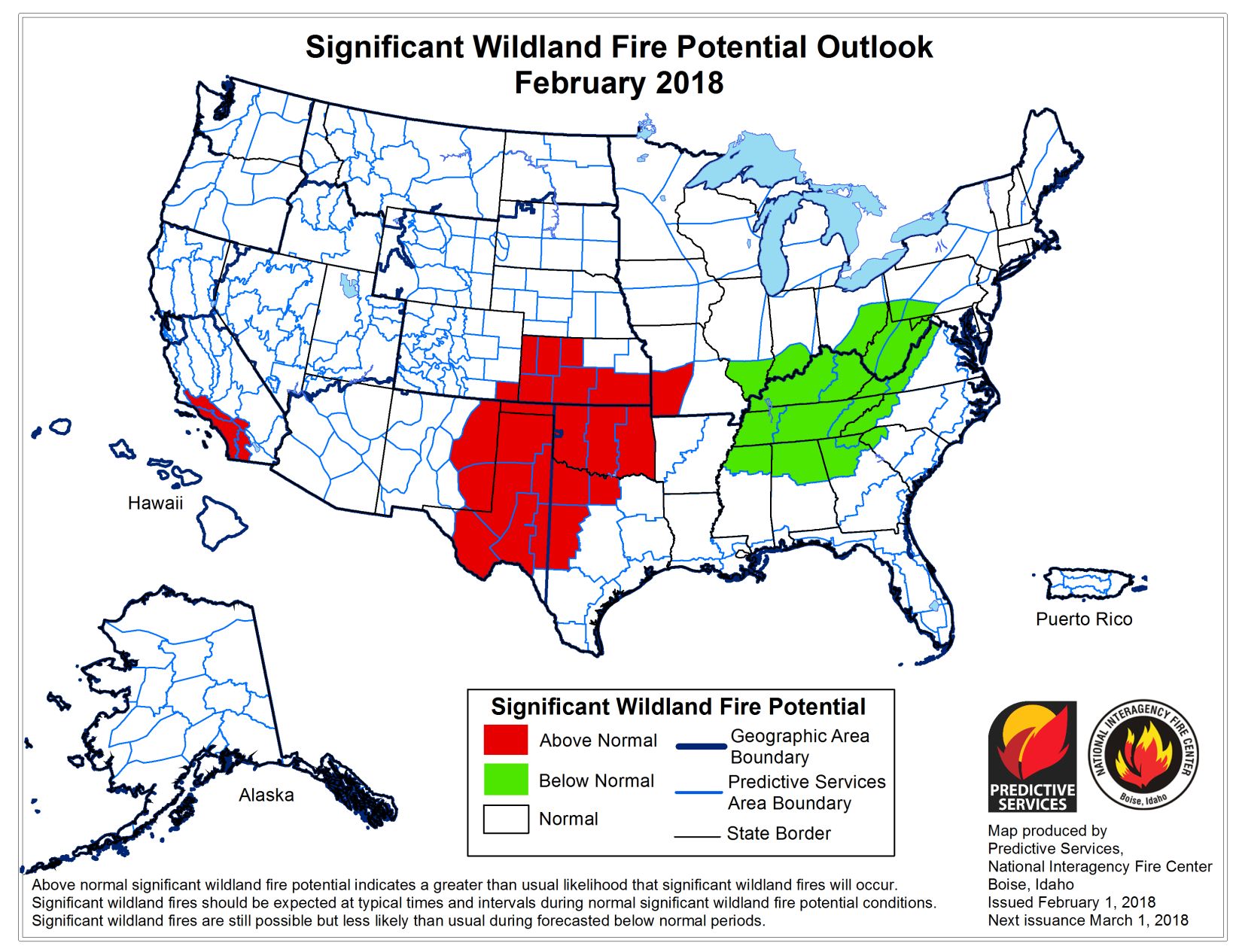Conditions ripe for another spring on fire

The National Interagency Fire Center, Boise, Idaho, issued its “National Significant Wildland Fire Potential Outlook” Feb. 1.
And it looks like ranchers and volunteer firefighters could see conditions eerily similar to spring 2016 and 2017.
According to the outlook, wildfire activity is likely to begin to increase in February as would be seasonally expected. The February and March outlook maps have a large swath of above normal significant wildland fire potential across the Southern Plains, due in part to the high fuel load on the range.
Following last year’s Starbuck Wildfires, above average precipitation came from April through September as a welcome relief for ranchers with blackened rangeland in the Southern Plains. The National Oceanographic and Atmospheric Administration reported in September 2017 the warm-season U.S. precipitation total was 18.32 inches, a good 2 inches above average, making it the ninth wettest April to September period on record. Texas and Oklahoma received 109 percent of their average precipitation, with Kansas reaching 80 percent of its average for the same period.
This led to pastures greening up in many areas that had been affected by drought and wildfire. Many parts of the Southern Great Plains saw elevated growth, and with a dry winter that growth has turned into a “robust fine fuel crop, which will provide an elevated baseline of fire activity,” according to the NIFC outlook.
Many parts of Texas, Oklahoma and southern Kansas have seen extra dry and windy conditions further drying down that fuel load and leading to more red flag days. The U.S. Drought Monitor from Jan. 24 showed the entire state of Oklahoma in abnormal to extreme drought conditions, stretching up into all of western Kansas and parts of the Texas Panhandle.
“Existing dry conditions in these areas, above average fine fuel loadings, and anticipated periods of windy and dry weather should produce a fuels environment increasingly receptive to ignition and fire spread,” the outlook stated.
The outlook calls for the above normal significant wildland fire potential to continue through at least April for Oklahoma and Texas due to a transition from La Niña to El Niño conditions.
As for Kansas, the outlook reported that deficit moisture from November to January in southern Kansas and southeast Colorado have intensified the drought and led to an abundant dead grass and brush fuel load. The agency predicts a warmer and drier spring, with fire activity to increase through February, March and April.
The Wildland Fire Potential Outlook is a product of the cumulative forecasts of the 10 Geographic Area Predictive Services units and the National Predictive Services unit of the National Interagency Fire Center. The full outlook can be found here.
Jennifer M. Latzke can be reached at 620-227-1807 or [email protected].



